How To Plant Celery Stalk, Seeds, or Scraps To Grow Celery
Not one, there are three ways to grow celery and have an unlimited supply of it at hand

The Apiaceae family of plants includes celery, which is most frequently consumed as a vegetable. The plant’s stalk, leaves, and, occasionally, its root are used in cooking. In addition to being low in calories, celery is a rich source of potassium, folic acid, and vitamin C.
Once you know how to plant celery stalks in soil, start with a base of nutrient-rich, well-drained soil. Add compost or manure to the soil to help provide nutrients. Celery needs full sun to partial shade and regular watering. Sow seeds in early spring, about 6-8 weeks before the last frost date.
Celery is a slow-growing crop and can take up to 3 months to mature. When the stalks are about eight to twelve inches tall; harvest celery and cut the stalk at the base, just above the soil line.
Today we will tell you about the different ways of growing and caring for celery in your garden.
Different Ways of Growing Celery At Home
Three ways to grow celery:
A. How to plant celery seeds?
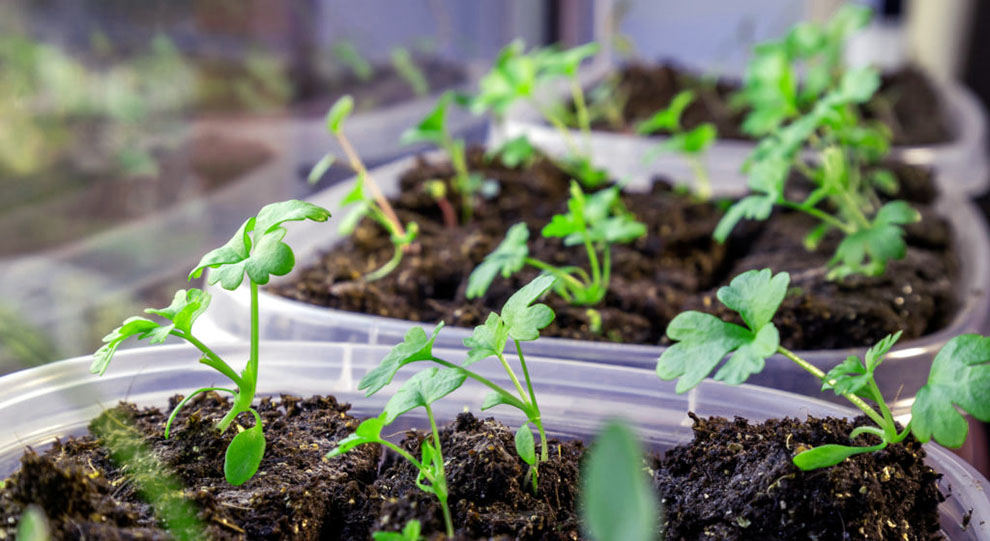
About 8 to 10 weeks before the last frost date, celery seeds can be started indoors in late winter or early spring. The seeds should be carefully pressed into the surface of the moistened potting soil. Maintain the mixture at around 70 degrees Fahrenheit, keeping it moist but not mushy. In 7–14 days, the seeds will begin to sprout.
Only the most vigorous plants should remain after the seedlings have emerged. When the seedlings have their first genuine leaves, transplant them into separate pots. Before putting them in the garden, gradually adapt them to outside circumstances over 7–10 days.
In the vegetable garden, celery prefers a sunny location with moist, well-drained soil. Amend the soil with compost or other organic matter before planting. Space the plants 10-12 inches apart in rows 2-3 feet apart.
Water the plants regularly, keeping the soil moist but not soggy. Apply a thin layer of mulch around the plants to help retain moisture and control weeds.
When to plant celery seeds?
Now that you know how to plant celery seeds let’s understand when to plant them. The ideal time for planting celery seeds would be early spring or late summer. The months of March through May are the best for planting celery seeds.
Celery seeds planted during early spring will yield more celery than celery grown at other times of the year. The plants will also be less likely to bolt or produce flowers if they are planted during early spring.
Where to plant celery seeds?
Celery can be planted in almost any garden soil as long as it is fertile and amended with compost or other organic matter to improve drainage. Nutrient-rich, boggy soil with a pH ranging from 5.8 to 6.8 is best suited for the growth of healthy celery plants. Before planting the celery seeds, one should till the soil to loosen it and facilitate drainage.
You should also add natural compost or manure to the loosened soil. This provides the growing celery plant with all the necessary nutrients. Also remember, never to cover the celery seeds with dirt after you dig up the soil to plant them because the celery seeds require exposure to sunlight to germinate.
After the plant has germinated, it prefers full sun but will tolerate some shade. So, remember to plant it in an area of your vegetable garden that receives ample sunlight throughout the day.
This is how you can grow Celery plants from seeds. To know more about the different methods of growing celery, like how to plant celery stalks in soil continue reading.
Transplanting the Celery Seedlings
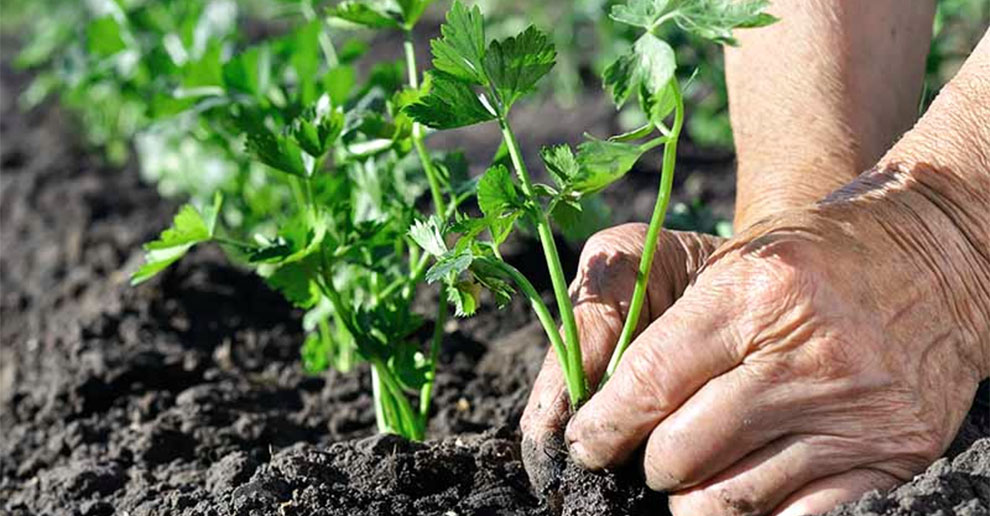
Celery seedlings need to be transplanted because they do not do well when they are directly seeded. They need to be started indoors to be transplanted later on. However, transplanting the celery seeds is an intricate procedure. To grow celery, you must know the correct method for transplanting the celery seedlings. The detailed process for transplanting celery seedlings is stated below:
Step 1. Choose a suitable location for transplanting celery seedlings. The new site should have well-drained, loamy soil and full sun.
Step 2. Prepare the new location for transplanting by tilling the soil to 12 inches and adding necessary potassium-rich fertilizers.
Step 3. Water the celery seedlings thoroughly before transplanting.
Step 4. Dig a hole in the new location that is large enough to accommodate the root ball of the celery seedling.
Step 5. Carefully remove the celery seedling from its current pot or container. The celery plant should have at least 3 to 4 mature leaves and a fully developed and functioning root system before it is transplanted.
Step 6. Place the celery seedling in the hole and backfill it with soil. Please ensure the root system is not damaged and establish it well in the new site.
Step 7. Water the celery seedling deeply and regularly after transplanting.
Watering Requirements of a Celery Plant
Water is significantly essential to a celery plant while growing. To ensure that the plant’s roots have easy access to water, it is preferable to water it thoroughly and deeply. The plant might need to be watered more regularly while it’s hot outside. Celery plants generally require about an inch or two of water per week to grow.
Be careful not to overwater the plants because even though Celery plants require a good amount of water to produce their juicy vegetable, overwatering the plants will cause the roots to rot and decay, eventually weakening the plant and causing its death.
How to Fertilize the Soil for a Celery Plant
Celery plants need a fertilizer with NPK 4-4-8. You may fertilize them once a month throughout the growing season before harvest.
If you prefer not to use chemical compounds or commercial fertilizers, that is fine too. You can use natural manure and vegetable compost to fertilize the soil. These natural composts act as organic fertilizers and provide all the necessary nutrients to the growing Celery plants, compensating for the need for chemical fertilizers.
B. How to plant celery stalks?
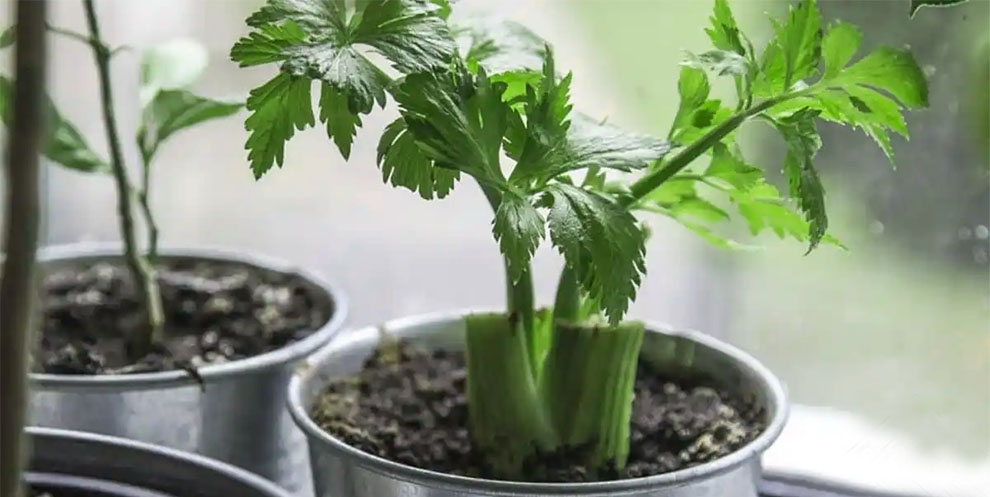
Choose a celery stalk between 6 and 8 inches long to plant. Make sure each side of the celery stalk has a few leaves before cutting it in half using a sharp knife. After that, add potting mix to a planting pot and thoroughly moisten the mix.
Please make a small hole in the center of the mixture once it has been wet, and then insert one of the celery halves, ensuring the leaves look up. Incorporate the celery stem gently into the potting soil. Repeat the procedure thing with the other celery half.
Place the pot in a bright area and water the celery stalks often, being careful not to let the potting soil become damp. The celery stalks will start to sprout and grow new leaves after a few weeks. The Celery stalks can be moved into a bigger pot or garden area once they are between 6 and 8 inches tall.
C. How to plant celery from scraps?
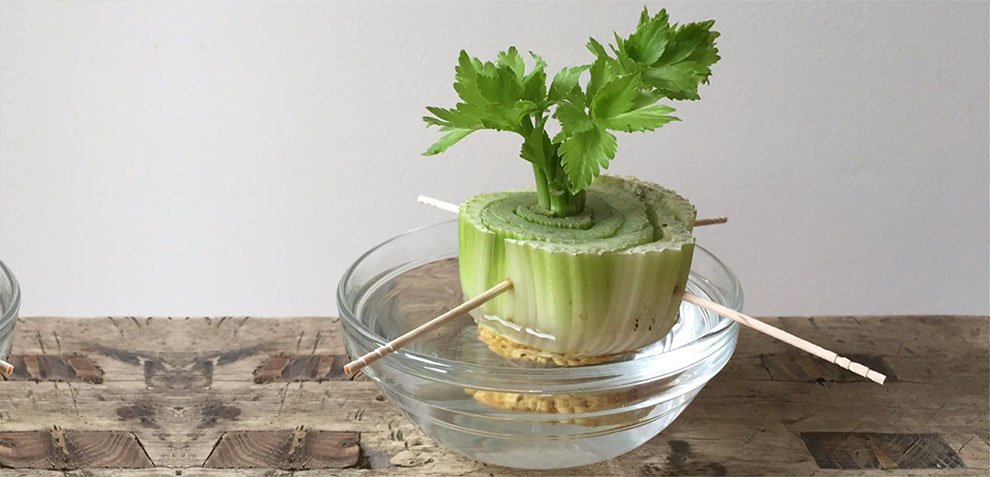
The most efficient way of planting celery is to produce it from its scraps or base. Celery planted from its scraps is known to grow faster and requires minimum care. Here’s how you can plant celery from scraps –
Step 1. You need to chop off the base of a bunch of celery. Cut the bunch of Celery roots off by 2 inches. Make sure to use a sharp knife that gives you a clean cut. This prevents cell damage in the base that is to be planted.
Step 2. Place the celery in a jar or shallow glass bowl. Water must be added until the root end is covered by 1 inch of water. Place the bowl or jar where it will receive a few hours of bright natural light every day so that it wouldn’t be harsh and warm during midday.
Preferably set the bowl near a window with east light. Every couple of days, change the water and make sure the celery root end is continually immersed.
Step 3. Small leaves should begin to emerge from the very center of the top after a few days. You might notice little stalks, leaves, and roots forming around the base in about a week. Around the base’s outside edge, the chopped stalks could start to rot and become brown. Do not be alarmed; this is typical.
It’s preferable to plant the celery in a pot before that occurs since if you leave it in water for too long, the outside stalks will develop severe rot. If you know how to plant celery seeds, then this step should be familiar to you.
Step 4. You can plant the celery in your garden or potting soil once the new roots are about 1 inch long. If you use potting soil, pick a blend that is excellent for vegetables and herbs and free of pesticides. To hold the plant from the root end to the cut end, dig a hole that is both deep and wide enough.
Ensure there is no air pocket beneath the root end of the celery before planting it in the ground. Please fill up the surrounding dirt gradually and tamp it down so that the cut end and the sprouting leaves and stalks are visible above the surface. This is how to plant celery with roots and grow them successfully.
How Far Apart To Plant Celery In The Ground?
Celery should be planted 18 to 24 inches apart in the ground to allow the plant ample room to grow. If celery is planted too closely together, the plants will compete for resources and may not reach their full potential. If you are planting several rows of celery, ensure the rows are at least 2 feet apart.
Avoid planting vegetables like parsnips, carrots, and turnips next to celery because these vegetables are from the same family as celery and can make the celery plants prone to the same pest diseases if they contract any.
How To Plant Celery In A Pot?
To plant celery in a pot, choose a pot at least 12 inches wide and deep with drainage holes. Fill the pot with a high-quality potting mix and add a slow-release fertilizer. Plant the celery seeds or transplants in the pot, and water regularly.
Planting celery in a pot is not only possible but also advantageous because you can move the pot indoors or outdoors according to the weather conditions, thus preventing it from facing the harsh extremities of the seasons.
When and How To Harvest Celery?
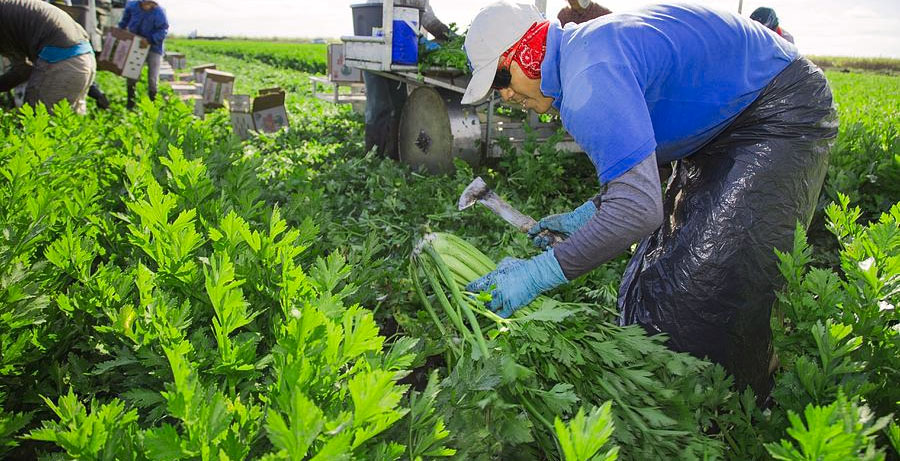
Celery can be harvested any time after the plant has reached maturity, with a minimum height of eight inches. The best time to harvest celery is in the morning after the dew has evaporated. To harvest, cut the celery stalks diagonally at the base of the plant with a sharp knife, leaving the inner stalks to mature.
The sharp knife creates a clean cut and prevents the celery from bruising, thus keeping it fresh longer. The ideal time of the year to harvest celery is in the fall because the weather is cooler, which means the celery is less likely to bolt.
If celery isn’t your pick, here are some more vegetables and fruits to grow during the winter.
In Conclusion
In this article, we have not only learned about the different ways of growing celery stepwise but also studied what kind of care we should provide to a Celery plant in great detail.
Complete information regarding the preferred soil type, watering requirements, and harvesting procedure of a Celery plant has been stated above comprehensively. So, if you are someone who is wondering how to plant celery at home, this is your guide to it!
